Related Research Articles

Dacia was the land inhabited by the Dacians. The Greeks referred to them as the Getae and the Romans called them Daci.

The Dacians were a Thracian people who were the ancient inhabitants of the cultural region of Dacia, located in the area near the Carpathian Mountains and west of the Black Sea. This area includes mainly the present-day countries of Romania and Moldova, as well as parts of Ukraine, Eastern Serbia, Northern Bulgaria, Slovakia, Hungary and Southern Poland. The Dacians spoke the Dacian language, a sub-group of Thracian, but were somewhat culturally influenced by the neighbouring Scythians and by the Celtic invaders of the 4th century BC.

Burebista was a Thracian king of the Getae and Dacian tribes from 82/61 BC to 45/44 BC. He was the first king who successfully unified the tribes of the Dacian Kingdom, which comprised the area located between the Danube, Tisza, and Dniester rivers, and modern day Romania and Moldova. In the 7th and 6th centuries BC it became home to the Thracian peoples, including the Getae and the Dacians. From the 4th century to the middle of the 2nd century BC the Dacian peoples were influenced by La Tène Celts who brought new technologies with them into Dacia. Sometime in the 2nd century BC the Dacians expelled the Celts from their lands. Dacians often warred with neighbouring tribes, but the relative isolation of the Dacian peoples in the Carpathian Mountains allowed them to survive and even to thrive. By the 1st century BC the Dacians had become the dominant tribe.

Dacian is an extinct language, generally believed to be Indo-European, that was spoken in the Carpathian region in antiquity. In the 1st century, it was probably the predominant language of the ancient regions of Dacia and Moesia and possibly of some surrounding regions. The language was probably extinct by the 7th century AD.

Balchik is a Black Sea coastal town and a seaside resort in the Southern Dobruja area of northeastern Bulgaria. It is located in Dobrich Province, 35 km southeast of Dobrich and 42 km northeast of Varna. The town sprawls scenically along hilly terraces descending from the Dobruja plateau to the sea. It is often called "The white city" because of the white color of the hills.
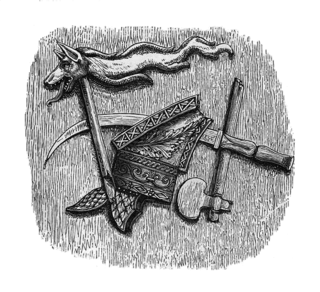
Cotiso or Cotison was a Dacian king who apparently ruled the mountains between Banat and Oltenia. Horace calls him king of the Dacians. Suetonius calls him king of the Getae. He is mentioned also by Florus, who wrote that Cotiso and his armies used to attack towards south when the Danube froze.

Argedava was an important Dacian town mentioned in the Decree of Dionysopolis, and potentially located at Popești, a district in the town of Mihăilești, Giurgiu County, Muntenia, Romania.

The Burs were a Dacian tribe living in Dacia in the 1st and 2nd centuries A.D., with their capital city at Buridava.
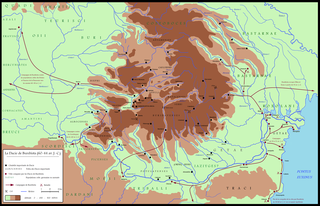
Teurisci was a Dacian tribe at the time of Ptolemy. They are considered originally Celts, a branch of the Celtic Taurisci (Noricum), who moved to Upper Tisza. However, the archaeology shows that Celts have been absorbed by Dacians, at some extent both creating a Celto-Dacian cultural horizon in the upper Tisza.

Argidava was a Dacian fortress town close to the Danube, inhabited and governed by the Albocense. Located in today's Vărădia, Caraş-Severin County, Romania.

Dava was a Geto-Dacian name for a city, town or fortress. Generally, the name indicated a tribal center or an important settlement, usually fortified. Some of the Dacian settlements and the fortresses employed the Murus Dacicus traditional construction technique.
The Decree of Dionysopolis was written around 48 BC by the citizens of Dionysopolis to Akornion, who traveled far away in a diplomatic mission to meet somebody's farther in Argedauon. The decree, a fragmentary marble inscription, is located in the National Historical Museum in Sofia.

Ion Horaţiu Crişan (1928–1994) was a Romanian historian and archaeologist. He conducted research in South-Eastern and Central Europe, focusing on Geto-Dacians and Celts.
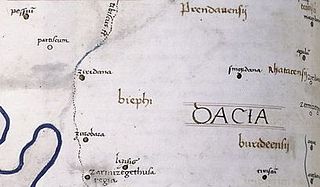
Ziridava was a Dacian town located between Apulon and Tibiscum, mentioned by Ptolemy in the area of the Dacian tribe of Biephi.
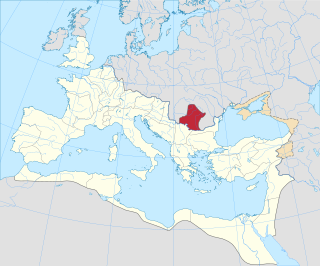
Roman Dacia was a province of the Roman Empire from 106 to 271–275 AD. Its territory consisted of what are now the regions of Oltenia, Transylvania and Banat. During Roman rule, it was organized as an imperial province on the borders of the empire. It is estimated that the population of Roman Dacia ranged from 650,000 to 1,200,000. It was conquered by Trajan (98–117) after two campaigns that devastated the Dacian Kingdom of Decebalus. However, the Romans did not occupy its entirety; Crișana, Maramureș, and most of Moldavia remained under the Free Dacians.
This section of the timeline of Romanian history concerns events from Late Neolithic till Late Antiquity, which took place in or are directly related with the territory of modern Romania.
The Antiquity in Romania spans the period between the foundation of Greek colonies in present-day Dobruja and the withdrawal of the Romans from "Dacia Trajana" province. The earliest records of the history of the regions which now form Romania were made after the establishment of three Greek towns—Histria, Tomis, and Callatis—on the Black Sea coast in the 7th and 6th centuries BC. They developed into important centers of commerce and had a close relationship with the natives. The latter were first described by Herodotus, who made mention of the Getae of the Lower Danube region, the Agathyrsi of Transylvania and the Sygannae of Crişana.
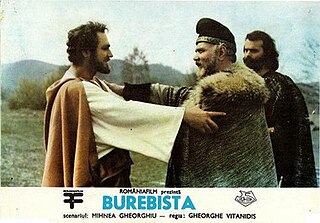
Burebista (1980) is a Romanian historical epic film about the life of the ancient Dacian king Burebista, depicting his battle to unify his nation and to resist Roman incursions.

Antheia was a town on the western coast of the Pontus Euxinus in ancient Thrace, a colony of the Milesians and Phocaeans. It later bore the Latin name Anthium, and was the precursor settlement to Apollonia Pontica. It was located on the Gulf of Burgas between the modern cities of Burgas and Sozopol in Bulgaria.
References
- Crisan, Ion Horatiu (1978). Burebista and His Time. Bucharest: Bibliotheca Historica Romaniae.
- Daicoviciu, Hadrian (1972). Dacii. Bucharest: Editura Enciclopedica Româna.
- Mihailov, Georgi (1970). "Inscriptiones graecae in Bulgaria repertae" (in Latin and Greek). 1 (2nd ed.). Sofia: In aedibus typographicis Academiae Litterarum Bulgaricae.Cite journal requires
|journal=(help) - Oltean, Ioana Adina (2007). Dacia: landscape, colonisation and romanisation. Routledge. ISBN 978-0-415-41252-0.